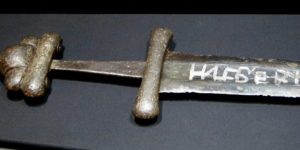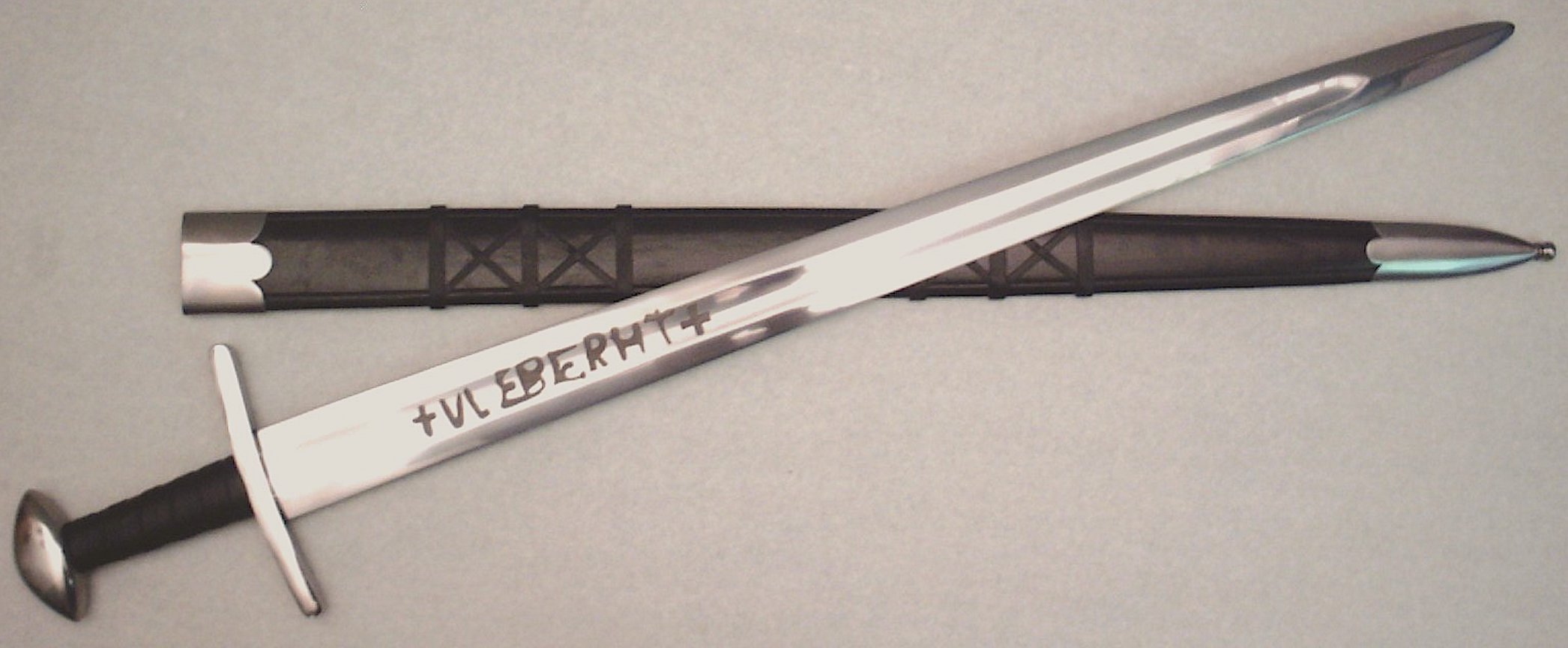A Coveted 1000-year-old Viking Brand and Yes, Cheap Knock-Offs
It’s roughly 1,000 years ago in Northern Europe, perhaps Finland or Norway. You are a seasoned Viking warrior and you’ve just acquired a unique and coveted sword you take into battle for the first time – a sword that you know will give you a clear margin of success. It’s durable, lightweight and holds a great edge. Unlike your opponent’s sword, it does not break easily when it strikes a shield or hits another sword. You win the battle and notice the strange letters and inscription on the blade near the hilt- Ulfberht. You smile with confidence and know this made the difference.
 A unique technology and early trademark that created one of the most valued brands of the time
For nearly 300 years these swords appeared throughout Northern Europe, mostly Scandinavia. They had been found in gravesites, often buried with a high-warrior or Viking noble through the early Middle Ages.
The secret to the uniqueness and strength Ulfberht swords is the distribution of carbon in the blade. Steel swords of the time were made by mixing iron and carbon to produce steel. The maker of these swards used the perfect amount of carbon under high temperature to produce blades that were sharper, more durable and more flexible than any other swords made during the time. It was the hi-tech weapon of it’s time.
A unique technology and early trademark that created one of the most valued brands of the time
For nearly 300 years these swords appeared throughout Northern Europe, mostly Scandinavia. They had been found in gravesites, often buried with a high-warrior or Viking noble through the early Middle Ages.
The secret to the uniqueness and strength Ulfberht swords is the distribution of carbon in the blade. Steel swords of the time were made by mixing iron and carbon to produce steel. The maker of these swards used the perfect amount of carbon under high temperature to produce blades that were sharper, more durable and more flexible than any other swords made during the time. It was the hi-tech weapon of it’s time.
What’s fascinating is that even 1,000 years ago the idea of building a unique and recognizable trademark or brand around a revolutionary technology did the same thing it does today
The Ulfberht swords as they became known, dated to the 9th through the 11th centuries, with blades inlaid with the inscription +VLFBERHT+ (and variants). The word is a Frankish personal name that many believe the original maker signed it with. Over time it became the basis of a trademark of sorts, used by multiple bladesmiths for several centuries. It immediately symbolized the quality of the sword, making them the most sought after blades of the era, especially for the Vikings and Scandinavians warriors, who for the most part did not read the Roman alphabet!
 True Rolex watches always retain their value and counterfeit ones try to steal it
True Rolex watches always retain their value and counterfeit ones try to steal it
In a way, this was the high-end “brand” of swords. Like BMW or Rolex, these swords represented the most prestigious technology and quality for the era. And, just like high-end designer brands today, they were in such high demand that fakes were also produced. Yes, knock-offs from the originals, which also were imprinted with Ulfberht. I’m sure the user, unfortunately, discovered this in their first and perhaps last battle.
What’s fascinating is that even 1,000 years ago the idea of building a unique and recognizable trademark or brand around a revolutionary technology did the same thing it does today. It created perceived value and a “brand narrative” that drove its value as stories were passed on about its quality.
Like in our modern era, the value of a brand and the quality it represents are extremely important both from a practical point of view and a sense of prestige, power, and influence. Whether it’s a Dyson Vaccum, a BMW or an Apple watch, each symbolizes both a technology and a trademark that is coveted and desired by consumers.
Whether it’s a Dyson Vaccum, a BMW or an Apple watch each symbolizes both a technology and a trademark that is coveted and desired by consumers
The continuous production of this Ulfberht sword for nearly 200 years shows that generations of “makers” have protected their brands and technologies and chosen to sell their products selectively. Just like with the Ulfberht sword fakes, in our modern world, others try to steal the trademark value of real products with cheap copies that proliferate in the market place.
All things considered, the appreciation of trademark and “brand value” is nothing new. History teaches us that even 1,000 years ago we were after the “Rolex” of that time.
[/et_pb_text][/et_pb_column][/et_pb_row][/et_pb_section]